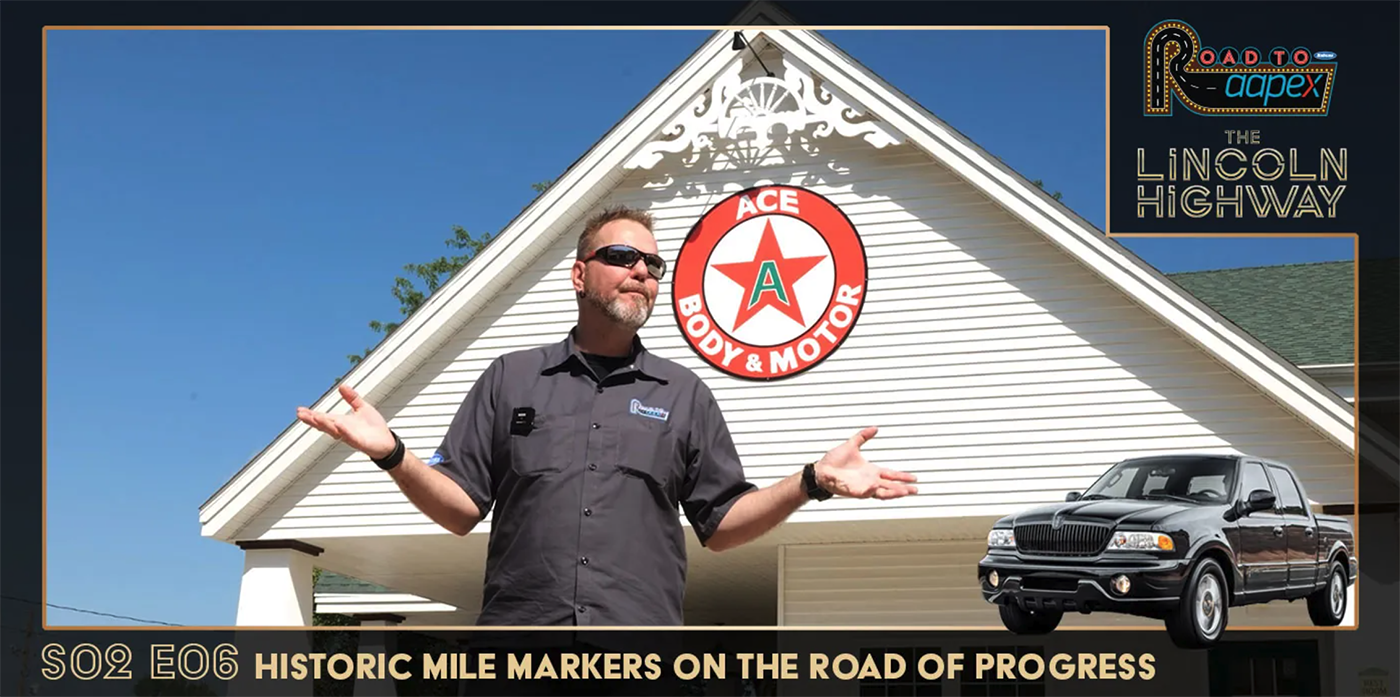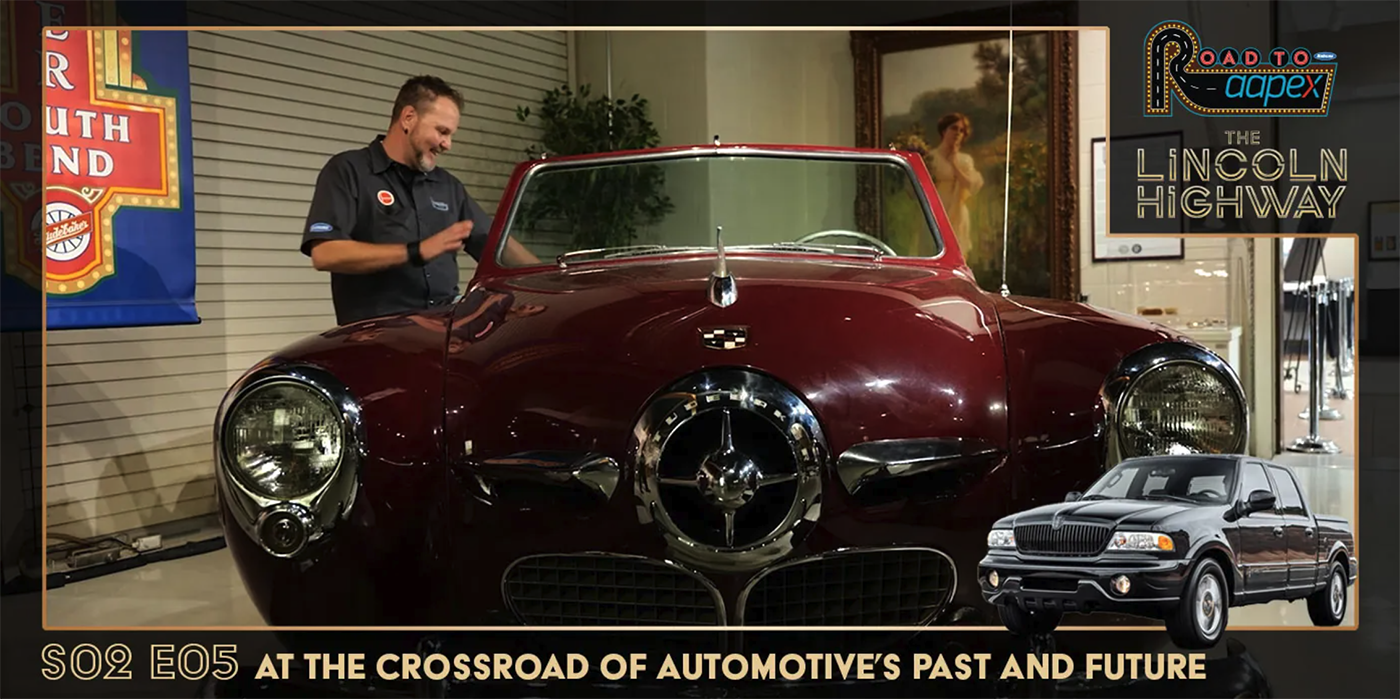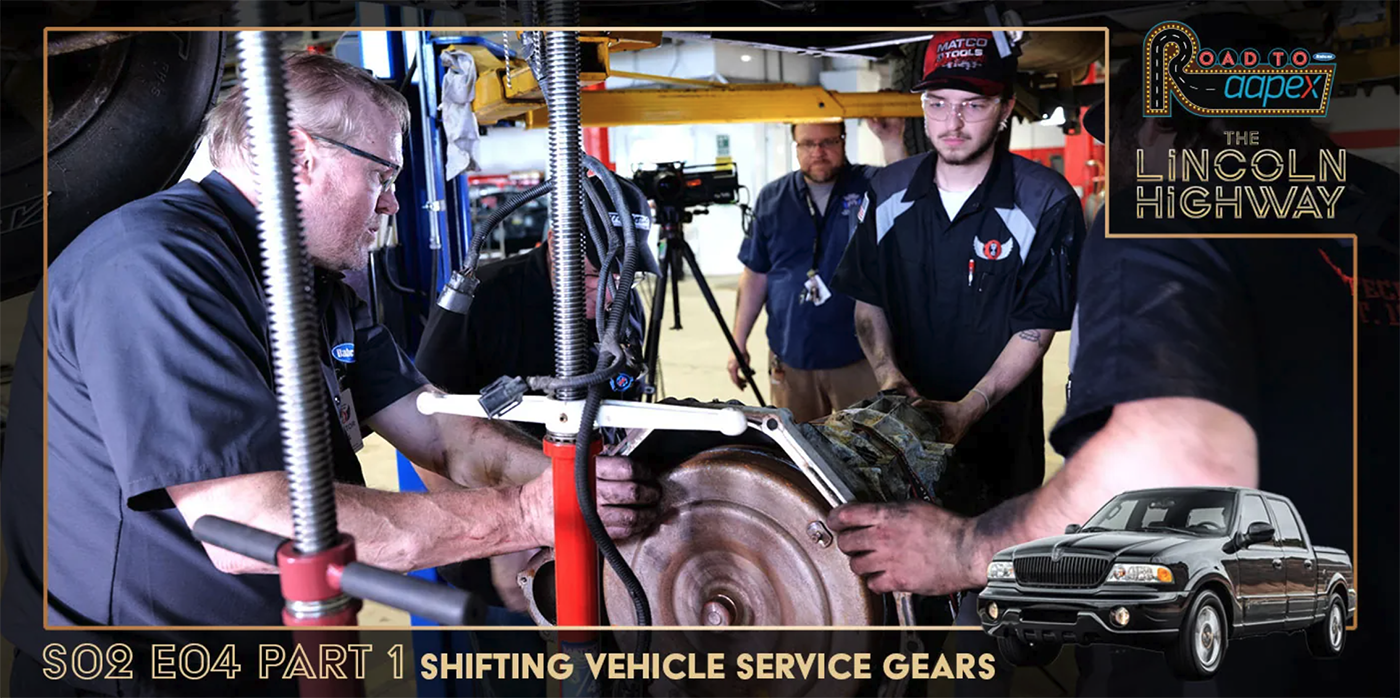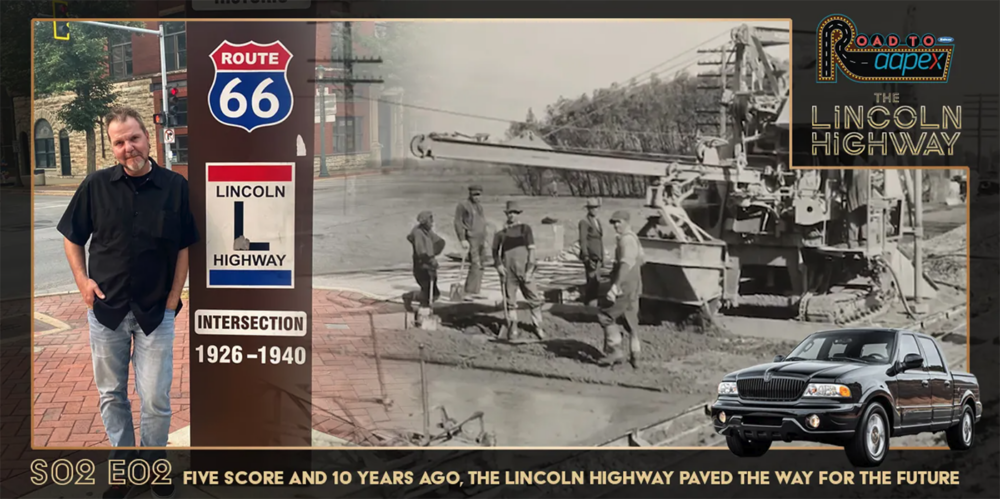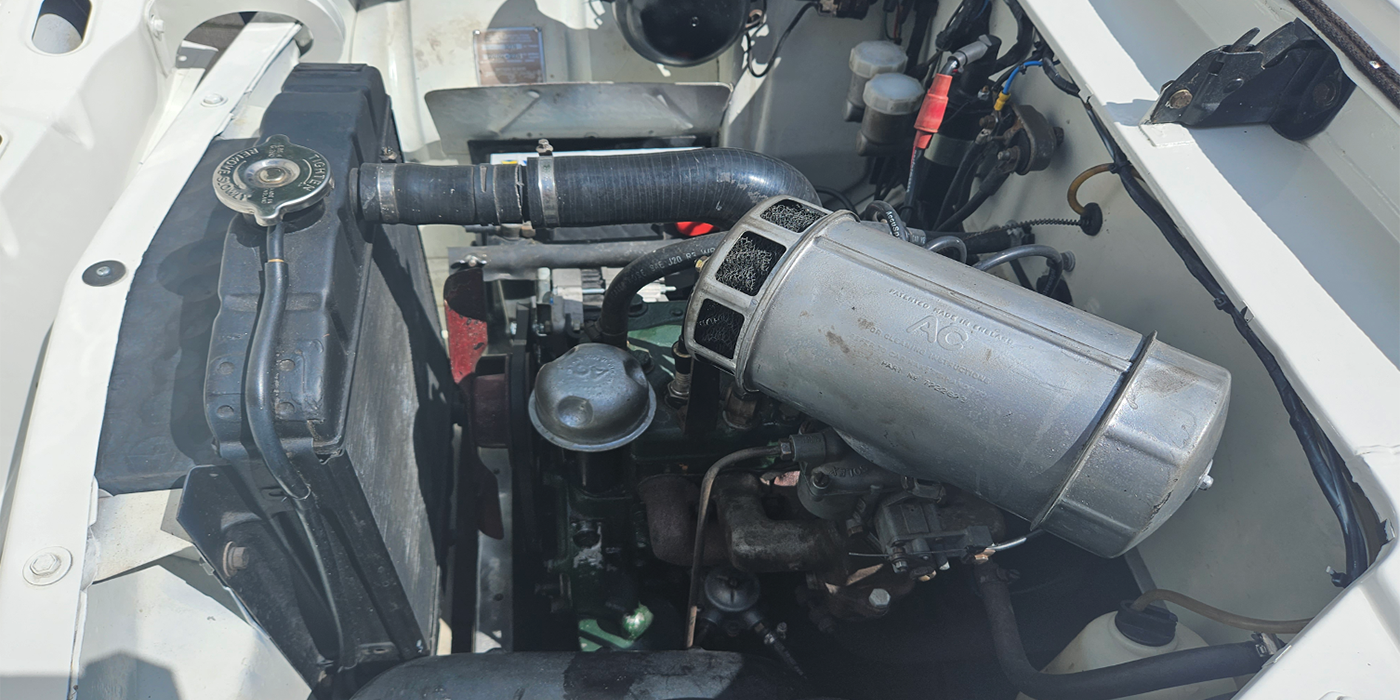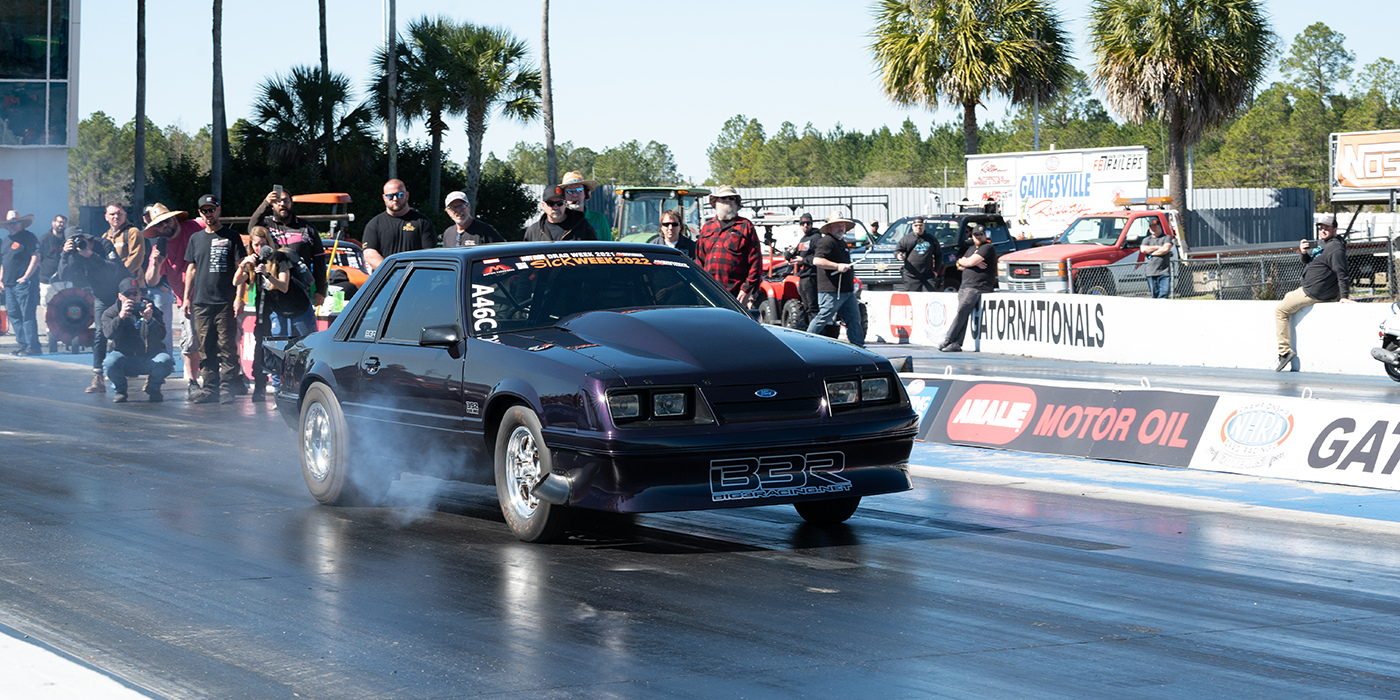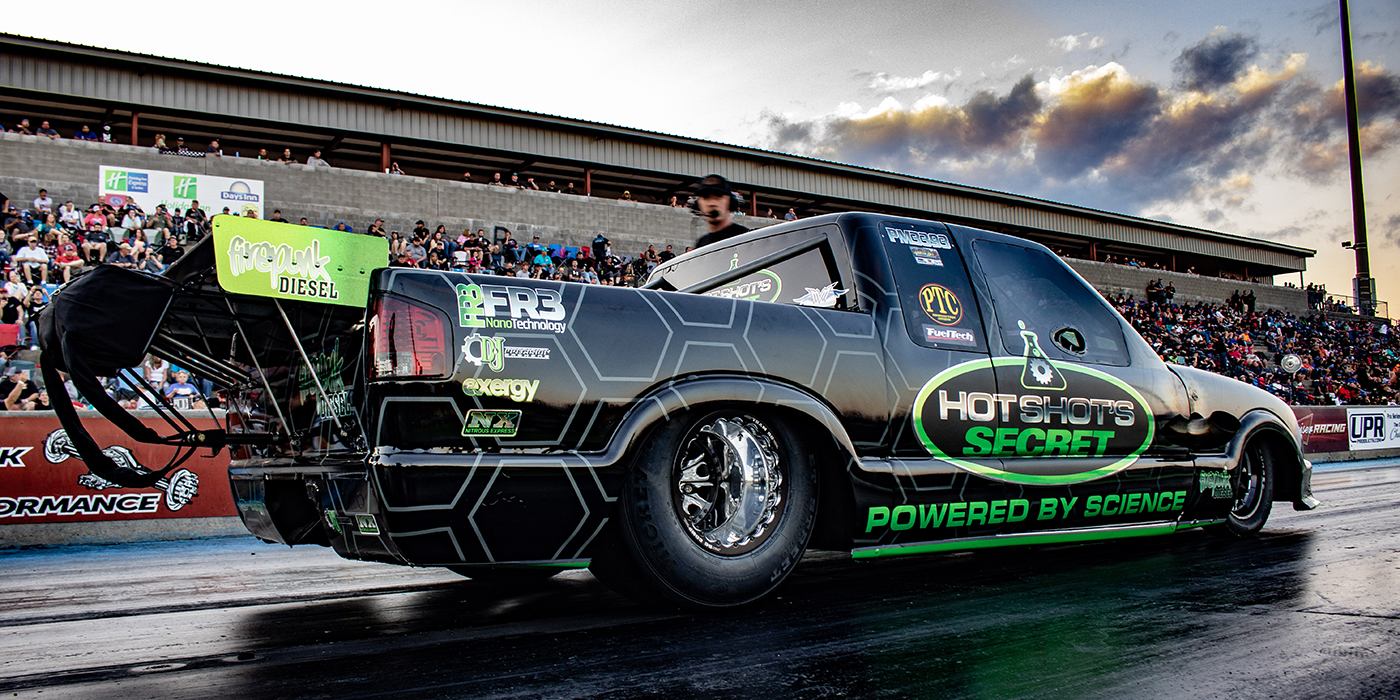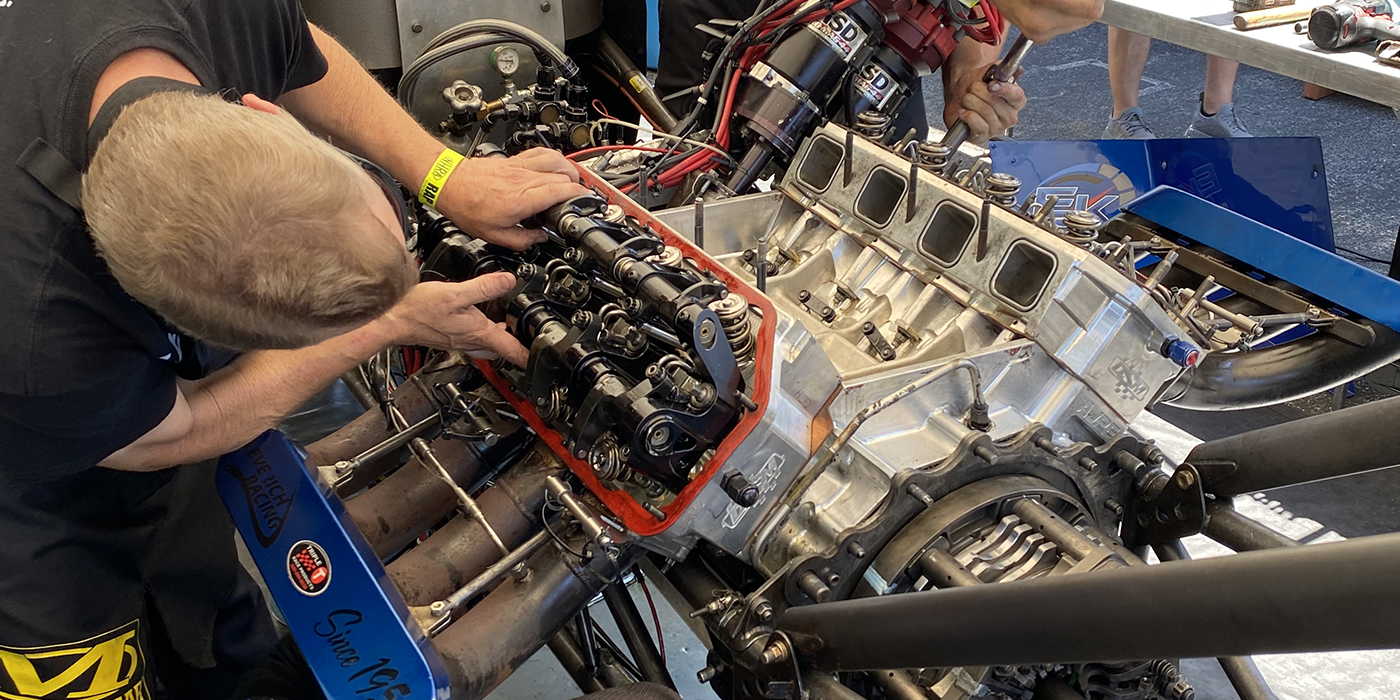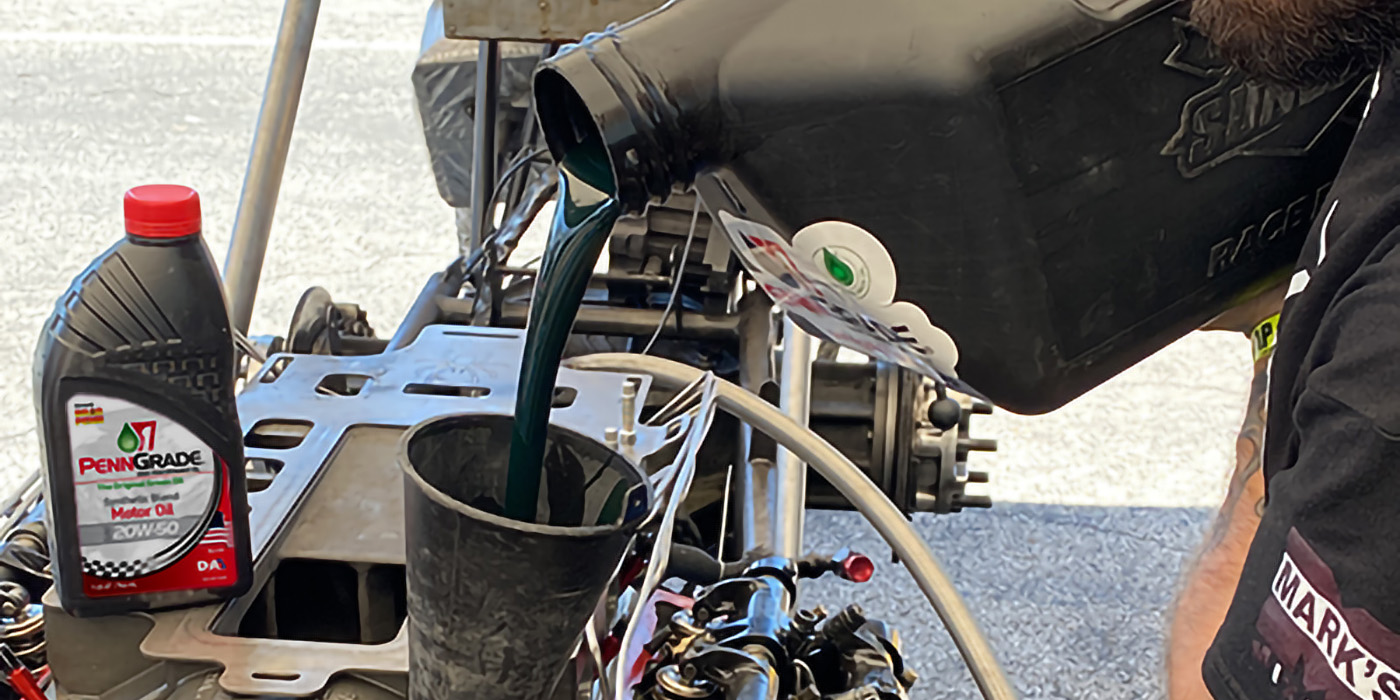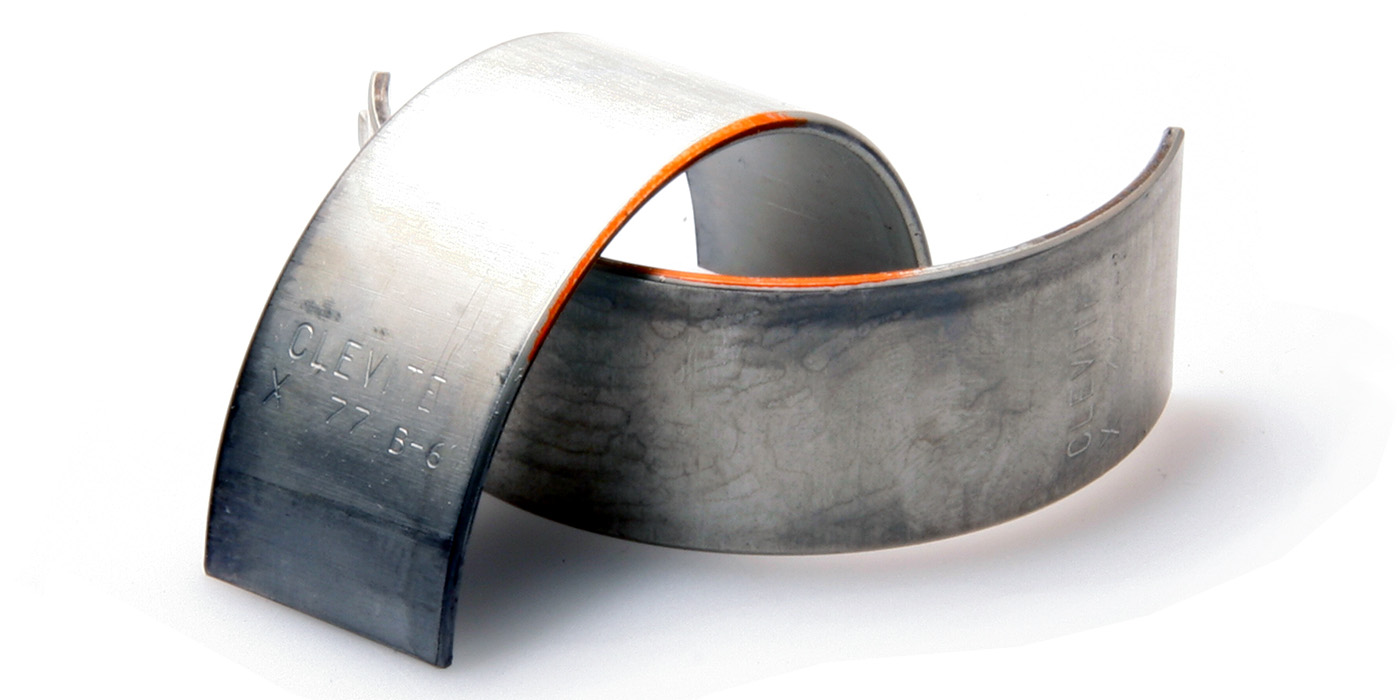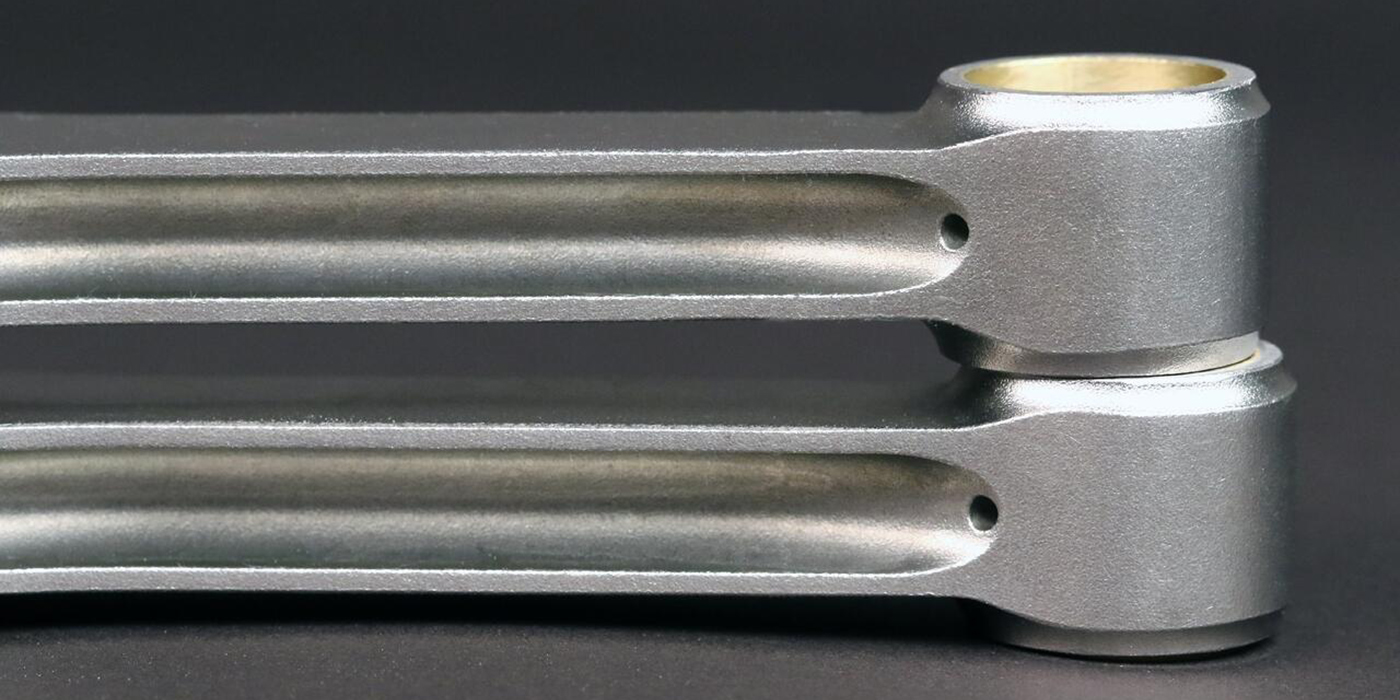At the time of our build a new 6.1L was around $1,000 from Mopar. This is definitely reasonably priced but we really planned to stick to a budget and did not know what we would be up against.
One thing that really threw a wrench into things was – just for giggles – we entered our stroker build into the Amsoil Engine Masters Challenge. Next thing we know, the engine was chosen to participate.
So the engine suddenly needed to be built around the guidelines of the Engine Challenge Rules. One important consideration in entering the engine into the Engine Challenge was the requirement of a hydraulic flat tappet or hydraulic roller camshaft. To my knowledge there are no manufacturers making aftermarket lifters that are solid rollers for the Late Model Hemi. So using the factory hydraulic roller camshaft engine would be fair advantage with the challenge. Another factor was the use of 91 octane pump gas. The engine would definitely have to be streetable, but that is what we wanted when we started this project anyway.
For more background information on the preliminary build information for this engine, see “Building a Late Model Hemi Stroker” on page 22 of the March 2010 issue of Engine Builder.
In these earlier articles about the engine we give details of the internals and the manufacturers that we sourced our parts from. Something to keep in mind, however, is that there are not many manufacturers to source parts from on the Late Model Hemi. There are definitely some people making some awesome parts, but they would likely put this project over budget. So, many of the parts would come from Mopar.
These OEM-sourced parts include the injectors. The stock 5.7L injectors would not be able to supply enough fuel. The injectors also had to be stock bodied. OEM injectors are really thin, unlike other injectors which are sort of bulky. Because we were using the 6.1L intake from a Charger, the injectors would have to be from Mopar to fit the intake manifold. We found what we needed in injectors from the SRT-4 Neon.
We found that the ’09 5.7L cylinder heads would allow the 6.1L intake to bolt on with no restrictions. On the older heads, the intake mouth of the 6.1L was much bigger and the transition was terrible. So why didn’t we just use the 6.1L head? In doing the project, I had several people ask that question. There’s one very important reason: the 6.1L cylinder head will not fit the 5.7L block. Because of the water and oil drain back passages in the cylinder head they will not interchange.
We also went to Mopar for the rocker shafts and rocker arms. To keep within a budget we could not afford some of the great aftermarket rocker arms that are available. However, The stock rocker arms and shafts are reasonably priced and offer some savings on weight of the valve train.
Again, I’m often asked why we didn’t just use the ones that came with the salvage engine; why replace them? Simple. Our engine had suffered from overheating issues before we purchased it. The rocker shafts cannot be thoroughly cleaned unless you remove what looks to be a freeze plug in the ends of each shaft. And these plugs are not serviceable, so removing them to be cleaned would be useless.
Another item we had to source from Mopar was the coil packs. The ’03 Hemi had coil packs with the use of plug wires. The ’06 6.1L coil packs had no plug wires: both plugs fire at the same time per cylinder per coil pack. This makes for a much neater package and, by using the FAST XIM for our ignition, the hook-up was very simple. We also used the FAST fuel injection system which was complete with wiring harness for our Hemi application.
The only other things we had to purchase from Mopar were the factory sensors needed for the fuel injection system. These include the MAP, crank, cam, intake air and coolant temp sensors. The IAC (idle air control) came from FAST because they had the adaptor to fit our Accufab 90mm throttle body.
If, like we did, you purchase a truck engine for your project and you plan to place the engine in a car there is something you need to know: you’ll need to purchase a 6.1L front cover for the engine. The aftermarket dampers are not spaced like the truck’s damper so everything will be out of line from the belt. The damper has the belt grooves machined into it, so if you do run an aftermarket damper make sure you know what it fits.
So, to get back to my first point, the most important part of this engine build: what kind of power do you think this engine would produce? The head flow is incredible when compared to a wedge type engine. After boring the block to 4.000? – which is a .070? over bore – and running a 4.050? stroke from Callies, the engine comes in at 407.2 cid. The reason for the over bore was to achieve at least 400 cubic inches of displacement. In dyno tests it seems that 400 cid is a reasonable size for power. If it has fewer cubes, the engine still has to pull the same loads with the valvetrain, camshaft and rocker system, while anything over this size tends to increase frictional losses from bigger parts.
With the cylinder bore being 4.000? this makes the piston more common and reasonably priced. In our case, there were some things to figure out as far as valve depth and piston dish to achieve our lift rule of .650? and compression of no more than 11.5:1. Mahle did an awesome job on our pistons We ended up with 11.2:1 compression and .080? piston-to-valve clearance.
When using a 4.000? bore on the 5.7L Hemi, the head gaskets will have to be custom-made. Cometic did a great job, giving us with a three day turn around on the order. They also can manufacture any thickness you like up to an 1/8 of an inch. The object was to achieve the right amount of quench without hitting anything. The head gaskets we chose were .040? thick.
When we had it all built we took the Hemi to run on the dyno at RP racing engines in Lenoir, NC. To our surprise, the engine made 644 hp at 6,500 rpm and 571 lbs. ft. of torque at 5,500 rpm. Our rpm range was from 2,500 rpm to 6,500 rpm, just like the engine challenge would be. Aaron Lail from Trudyno sports in Newton, NC helped to tune the fuel injection. Aaron runs a chassis dyno facility and has tuned on the late model Hemis with the FAST fuel injection systems for several years. The engine made an average torque of 519 lbs. ft. with an average horsepower number of 458 and we left for the Engine Masters Challenge with great expectations.
Unfortunately, due to some problems with damaged grounds, we did not get a chance to compete. This was one of those stupid things we overlooked when placing the engine on the stand for competition. A small oversight caused a great disappointment. That was a little tough to swallow, but we still walked away with a great competitor.
This engine is very streetable and mild mannered. Being able to run on pump gas would make this engine combo great for any hotrodder’s application. To download a dyno sheet of this engine, click here.


